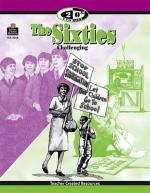|
This section contains 786 words (approx. 3 pages at 300 words per page) |

|
1919-1981
Labor Leader; President of the American Federation of State, County, and Municipal Employees (AFSCME)
Unionization of Public Employees.
The spreading of public-sector unionism accounted for much of the labor movement's vitality in the 1960s. Public-employee union membership rose from less than 400,000 in 1955 to over 4 million the early 1970s. This rapid increase can be explained in several ways. As the government assumed a larger social and economic role in post-World War II America, the number of public workers skyrocketed — by the mid 1960s one out of every eight Americans was employed by local, state, or federal government. This growth lured union leaders to mount major organizing efforts. Such unionization campaigns benefited from the steady inflation over the period that encouraged workers to worry about their salaries, but they were also aided by the federal government. In 1962 President John Kennedy signed executive order 10988, granting federal employees...
|
This section contains 786 words (approx. 3 pages at 300 words per page) |

|




